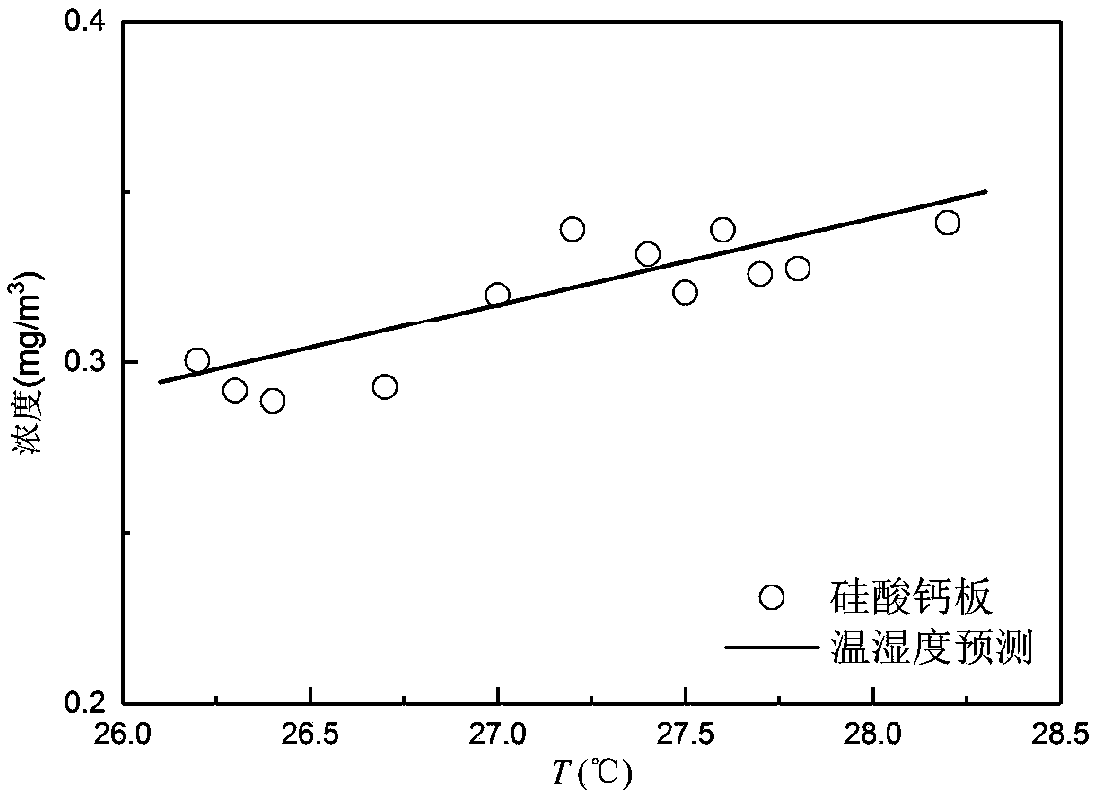Method for predicting release concentration of formaldehyde in decorative materials under conditions of different temperature and humidity
A formaldehyde release and decorative material technology, applied in the measurement of color/spectral characteristics, complex mathematical operations, etc., can solve problems such as measurement insufficiency, and achieve high reliability.
- Summary
- Abstract
- Description
- Claims
- Application Information
AI Technical Summary
Problems solved by technology
Method used
Image
Examples
Embodiment
[0050] The method for predicting the formaldehyde emission concentration of decorative materials under different temperature and humidity conditions includes the following realization principles:
[0051] (i) determine the time-varying patterns of pollutants;
[0052] First, introducing the material release rate SER, considering the air exchange rate n, the change rate of the pollutant concentration C(t) is expressed as:
[0053] dC / dt=LSER(t)-nC(t)
[0054] It can be seen that ventilation can reduce the increase rate of indoor pollutants. In order to improve the safety factor, conservative considerations, assuming that the indoor space is completely sealed, that is, n=0, then
[0055] SER(t)=dC / dt / L (1)
[0056] Consider the emission rate and the surface pollutant concentration inside the material, that is, the limit concentration C * , which is proportional to the difference of pollutant concentration C in the surrounding space,
[0057] SER(t)=k(C * -C) (2)
[0058] I...
PUM
 Login to View More
Login to View More Abstract
Description
Claims
Application Information
 Login to View More
Login to View More - R&D Engineer
- R&D Manager
- IP Professional
- Industry Leading Data Capabilities
- Powerful AI technology
- Patent DNA Extraction
Browse by: Latest US Patents, China's latest patents, Technical Efficacy Thesaurus, Application Domain, Technology Topic, Popular Technical Reports.
© 2024 PatSnap. All rights reserved.Legal|Privacy policy|Modern Slavery Act Transparency Statement|Sitemap|About US| Contact US: help@patsnap.com










